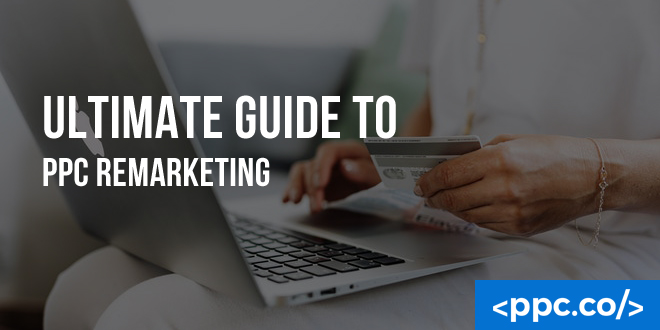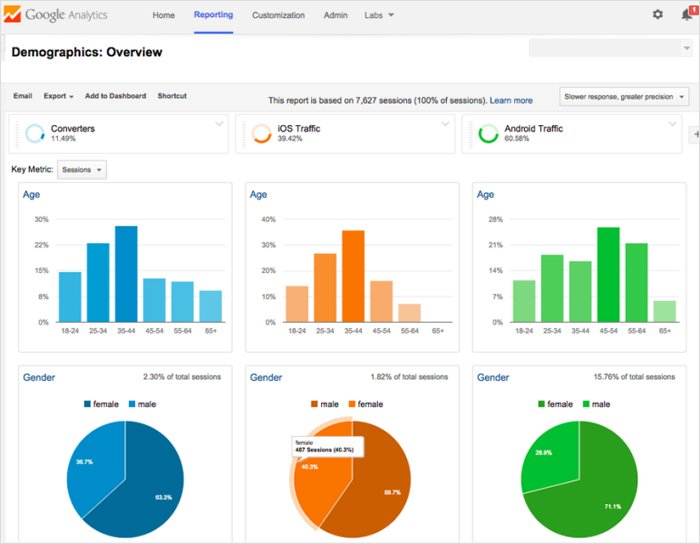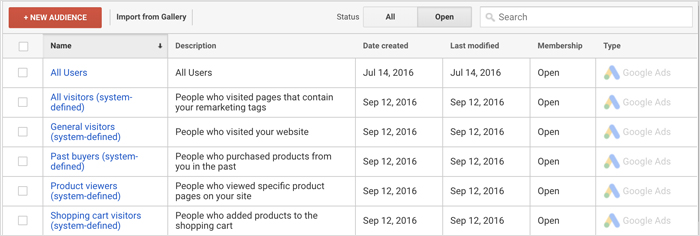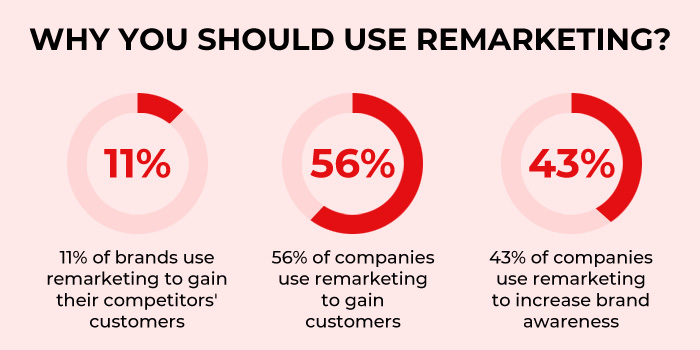


Remarking and retargeting are useful components of Google Ads and a crucial part of any PPC marketing campaign, that is if you understand and use it correctly. Before we break down how best to use PPC remarketing campaigns, banner ads to increase the return rates of online advertising customers, we’ll explain exactly what it is, how it works, and ways to use it.
Marketers may know what remarketing campaigns is, but even experts may find they don’t know everything about it. This guide will help to plug those gaps and become the ultimate resource for people using PPC remarketing Campaigns.
Table of Contents
Toggle
Remarketing Campaigns is essentially targeting ads to existing customers based on customer data. The types and variety of ads will differ based on customer preferences, market data, and a number of other factors.
This type of marketing is highly effective at getting existing shoppers to return to a site once they have already visited. It works by showing them things they may be interested in. This can be sales, new products, add-ons to existing products and services, new content on the site, and other types of marketing material or promotions.
The purpose is to increase the rate of repeat customer traffic through highly specific targeted ads marketing.
The one thing to note about remarketing campaigns or strategies is that they rely on existing customer data to perform well. Remarketing compaigns is not a customer acquisition strategy so the distinction should be made. You can’t collect customer preference data on people who aren’t your customers yet right?
So basically, before you even create remarketing campaigns you need customers who are already interested in your site (which means past visitors), and who have at least visited your site before or past visitors). That’s step one, remember it.

The reason customer data is needed for remarketing Campaign(besides the fact that it targets customers’ interests) is that the primary way that remarketing data is collected is through everyone’s favorite internet snack food, cookies. In this case, we’re talking about specific tracking cookies that are stored on users’ browsers and then used to follow them around the web and show them remarketing ads, ok maybe it’s not that specific but you get a general idea.
This can be done with the click of a button in Google Ads, it’s a button labeled remarketing. It allows you to set the tracking cookie requirements based on several different factors, duration of stay, pages visited, etc.
Every time a customer visits your site, cookies are collected which store a variety of user data that is relevant to your marketing work. Part of that data allows you to target customers with ads so that they will be more likely to visit your site and shop again. This is essentially why it’s called PPC remarketing, you’re performing targeted marketing/targeted ads marketing to existing customers or interested parties, hence you’re remarketing to them.
This doesn’t always mean that you’re targeting people you’ve already converted, but people who may have visited your site and not yet converted. In a sense, you’re marketing to existing customers and potential customers who’ve shown interest enough to visit but haven’t actually made that purchase yet. If you think of it as shopping, they’ve clicked add to cart, but haven’t yet pressed that checkout button. You’re giving them that last little push to come back and checkout with their cart full of goodies (or whatever else it is you’re trying to get them to do).
Now that you know a bit about remarketing Campaign and how the data is gathered as well as what it’s used for, you can begin to formulate a remarketing Campaign strategy to get those customers and potential customers returning and converting, hopefully again and again. To facilitate easier understand of the strategizing process, we’ll break down the process into pieces that’ll be more digestible, even for the marketing novice (we realize some of you reading this may already have a great deal of marketing space, but we like to cover our bases, this is the ultimate guide after all).
Also called segmenting, this basically means dividing your potential remarketing audience into different groups or ad-target types. This should be fairly straightforward and based on the data acquired.
Segmenting your audience ensures you’re not targeting the wrong type of ads to the wrong people. You want your remarketing ad usage to be as highly targeted as possible with remarketing Campaign and dividing up your audience helps to facilitate that.
There are numerous types of ads and deciding which type of ads to run for your target audience will be based on the data you have available and what works best for that particular audience.
There are enough ad types to create an entirely separate section, so we’ll break down the ad types and their uses elsewhere. One thing to note about picking your ad types is that Google allows you to create lists based on your ad type preferences for the audience.
Additionally, you can filter data and sort targets based on many factors, this helps you to decide what types of ads may work best. After all, different types of people have different search habits, such as how prone they are to search on mobile, how likely they are to watch video ads, and other things.
As with anything in marketing, before you know what really works, you’ll have to test it first. In the case of PPC retargeting ads, you may have lots of customer data, but that doesn’t mean you can always account for individual taste.
That’s why it’s important to test your marketing efforts and allow the data to coalesce until you’re sure of what is and isn’t working. Like any other marketing strategy, pulling the plug too early on a campaign means wasted efforts, but by the same token, letting a bad campaign run too long is wasted money and effort as well.
Test your methods and figure out what works, what kinda works, and what doesn’t work at all.
Like every other ad you’ll ever run, search engine optimization is key. Once you have a good idea of what works, you can begin to optimize for search engines. This is pretty much the same process as regular ads, just more specified to your target audience.
This includes optimizing for conversions too. Sale ads, special features and other types of ads that show customers what they’re missing out on is a great example of ways to optimize conversion when remarketing.
Before we talk any more about Remarketing Campaigns ad types and getting your specific strategy together, let’s talk about narrowing down and filtering your audience so that you know you’re targeting the right people. No matter the strategy, if you’re targeting the wrong audience, it’s likely wasted effort.
Imagine folks wanting to see a comedy show arriving at a talk on timeshares, you’d instantly lose your audience and nobody would buy a timeshare.
You can honestly target an audience in any number of ways. You can eliminate targets on the same basis as well. But essentially you’ll want to break your groups of targets down into manageable groups.
Beyond the basic demographic targeting options, which serve to narrow down audience gender, age-range, and other factors, there are a number of other things to look out for when trying to decide who to target.
For instance, one strategy is to target customers who hover on particular product pages. You could assume they are looking for a particular style of product or looking to see which one is cheapest or has the fastest delivery, factors such as that.
Knowing these possibilities you can create an audience category and then select ads that will target their interest.
As we said earlier, there is an endless number of ways to target a potential audience. Think about what you’re trying to do, what customers you’re trying to increase, and target according to those metrics.
It’s just as important who you don’t target in some sense. If you already have a segment of your market that regular ads are working for, then you don’t want to waste time and money remarketing to them.
One last tip on audience targeting is to narrow things down as much as possible. Target particular customers for particular URLs and make that a separate list. Say you want an audience to target sneakers, you can select the audience and target the ads to get them to shop specifically on your sneaker product pages.
In many cases, the more precise the targeting, the better.
Once you have all of your data, or before if you prefer, all of the setup to create lists of audiences and to target them for tracking and data collection can be done from the admin tab of your Google Ads account.
From the admin tab, you can set audience definitions based on a wide array of factors. This lets you customize your target audience to a great degree and gives you control over data tracking.
You can then create lists of those audiences and name them whatever you choose or even sub-divide them even more so that you can keep track of them even better. You’ll need to agree to some terms and conditions and be an active Google Ads Remarketing user, but once the “paperwork” is complete you’ll have access to create lists and also to determine how long you’d like your tracking cookies to stay stored on a user’s computer. This helps you set the targets for short-term or long-term campaigns or for whatever duration you’d like.
You can even set the frequency at which any given user will be shown your ads. It’s a good idea to set reasonable limits on these as too many ads can turn users off entirely. Remember, the idea is to nudge them into conversion, not scream at them until they convert.

There are a number of remarketing campaigns options that Google Ads allows you to choose from. Rather than just list them for you, we’ll discuss the main ones and ways they can be used to target an audience.
You can think of this as baseline marketing. This feature shows ads to browsers as they search the web or use apps on Google display network/display ad network. These are the conventional ad type and are best targeted towards the “browsing” type of users. Those people that go from page to page and typically like to look at lots of different things.
This type of remarketing shows ads to users of products that they’ve looked at before. This is good for those users that “shop” a lot (perhaps on an ecommerce site) but leave the cart full without checking out with it. This works on window shoppers too, the ones that don’t add to the cart but like to view product pages.
This is targeted remarketing optimized for your mobile website visitors or mobile app. As we said at the beginning, all that data allows you to know what users are browsing on and how often. If you know that your audience is frequent mobile browsers, then this option will help you target them.
This is just what it sounds like. It targets audiences and shows them search ads as they search Google. This display ads in their search results. This type of marketing works best on those users that just need a subtle reminder of what you sell or do. Those users that are on the doorstep of converting and just need a nudge are good for these ads.
Just as it sounds, this shows video ads to users as part of the Google display ad/ads network or for users of Youtube. This is great if you know that users are constantly watching videos. A short impactful ad can grab attention and make people want to traffic your site again and hopefully convert.
The most specific of the marketing types, if you correspond with customers via email, you can upload these to your Google Ads account and it will serve up ads as long as customers are signed into Google services.
Now that you know all about the ad types and how to use them, the last thing to worry about is SEO. Just like any other Digital marketing campaign, you’ll want to optimize all the elements of these ads to maximize rank and conversion chance.
We’ll break it down into sections so that you understand the different optimization strategies to make your ad campaigns work best.
This sounds simple, but you want to make sure your ads will work to drive traffic and convert. This can be a long process as you test and retest to ensure accurate results but this is key to the whole campaign.
As we talked about, you can adjust your audience settings and frequency of ads on the fly. You should be routinely checking and testing these to ensure your target market is correct and that you have the ad density correct.
The wrong audience target can mean wasted ads. Too much ad saturation for users can make users less prone to revisit instead of more prone. Finding the balance is tricky but worth putting the time into to get it right.
This should be self-explanatory but you’re looking at three things in particular. ROI, CTR, and IS. That’s the return on investment, how much money you’re getting for every ad dollar spent, click-through rate, how many times customers follow through and click to your site, and impression share, basically how much recognition your ads are getting. One quick note on impression share, if this is too high, you’re likely upsetting some customers.
Just as tricky as with standard Digital marketing campaigns, making sure the page is relevant, the text is useful and the page is able to tell potential customers what they want to know about the product or service is key.
You should be used to optimizing your landing pages for keywords and user experience. The process here is the same, make sure the users are getting what they want out of the landing page and continuing on to convert.

There’s no magic formula for remarketing but the general rule of the thumb is to target customers who have the potential to revisit and convert. You’re not mass marketing to everybody who’s ever visited your site. Some of them can’t be converted and others will return on their own.
That’s why we said to make your audiences as specific as possible. This lets you target just the niches of customers that are useful to you and eliminates a lot of the non-contenders.
Our other tip is to stay focused on whatever it is you do. You might call it brand focus. You want to draw in people who’ve visited your site. They likely already know a bit about you, so stay on brand and on point. In this way remarketing and PPC can help to do nothing more than improve your brand online.
Lastly, accept what you can and let go of what you can’t. You won’t win every target audience, not everyone you remarket to will convert and some campaigns may have more success than others. Particularly during sales or the holidays, you may see more from your remarketing than during other periods. Accept it and limit your risk or change your strategy so that you don’t waste ad dollars. Once you find your own rhythm, you’ll likely be winning more conversions and spending less.
There you have it, our ultimate guide to PPC remarketing. Hopefully, it’s taught you everything you ever needed to know about run remarketing campaigns’ target selection and everything in between to make your campaign a success & up on Digital marketing.
Please fill the below form to download the PDF
“*” indicates required fields.
Please fill the below form to download the PDF
“*” indicates required fields.
Please fill the below form to download the PDF
“*” indicates required fields.
Please fill the below form to download the PDF
“*” indicates required fields.
Please fill the below form to download the PDF
“*” indicates required fields.
Please fill the below form to download the PDF
“*” indicates required fields.